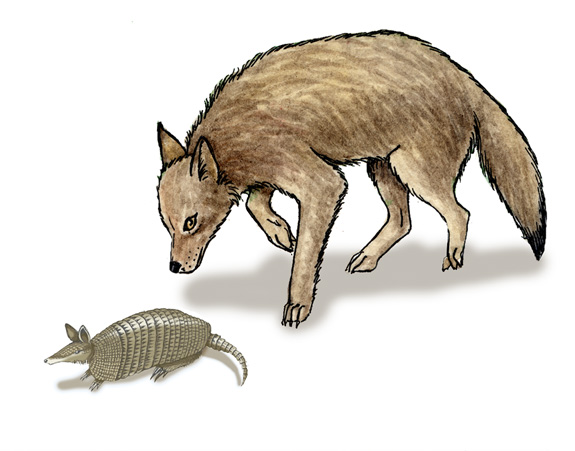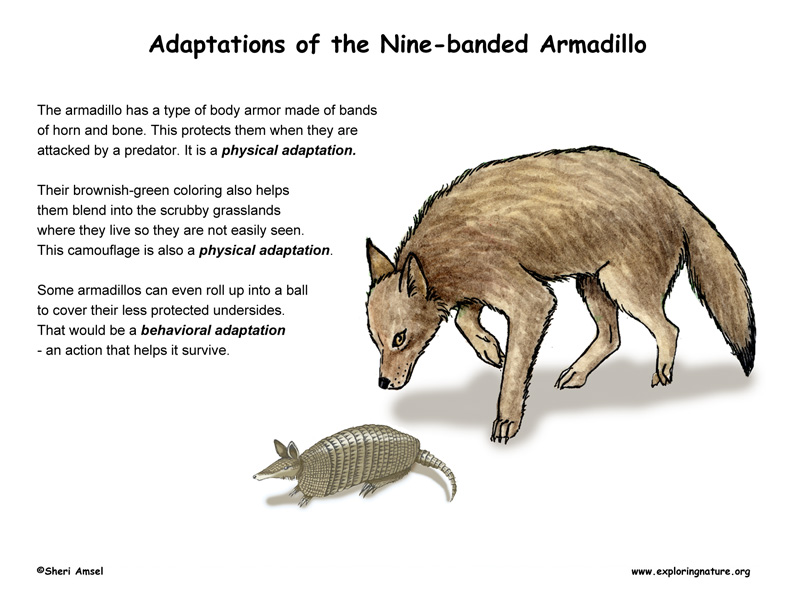

Adaptation in a population of living things happens as a result of an adaptive trait. This is any inheritable trait that helps the animal survive longer, reproduce longer, and have more offspring (that also have that trait). Adaptive traits can improve an animal's ability to find food, make a safer home, escape predators, survive cold or heat or lack of water.
The armadillo has a very useful physical adaptation. It has a type of body armor made of bands of horn and bone. This protects them when they are attacked by a predator. Some armadillos can even roll up into a ball to cover their less protected undersides. That would be a behavioral adaptation - an action that helps it survive. Their brownish-green coloring also helps them blend into the scrubby grasslands where they live so they are not easily seen.
For Discussion and Critical Thinking:
The armadillo has adaptive traits that helps it survive - both physical and behavioral.
1. Name one of its phyical traits and how it helps it survive?
2. Can you think of other animals that have physical traits that help them fend of predators? Name two and describe their physical trait and how it helps them survive.
3. Can you think of other animals that have behavioral traits that help them fend of predators? Name two and describe their physical trait and how it helps them survive.
4. Do you have any physical traits that help you survive? Discuss one.
When you research information you must cite the reference. Citing for websites is different from citing from books, magazines and periodicals. The style of citing shown here is from the MLA Style Citations (Modern Language Association).
When citing a WEBSITE the general format is as follows.
Author Last Name, First Name(s). "Title: Subtitle of Part of Web Page, if appropriate." Title: Subtitle: Section of Page if appropriate. Sponsoring/Publishing Agency, If Given. Additional significant descriptive information. Date of Electronic Publication or other Date, such as Last Updated. Day Month Year of access < URL >.
Amsel, Sheri. "Adaptations of the Armadillo" Exploring Nature Educational Resource ©2005-2024. December 13, 2024
< http://mail.exploringnature.org/db/view/1678 >

